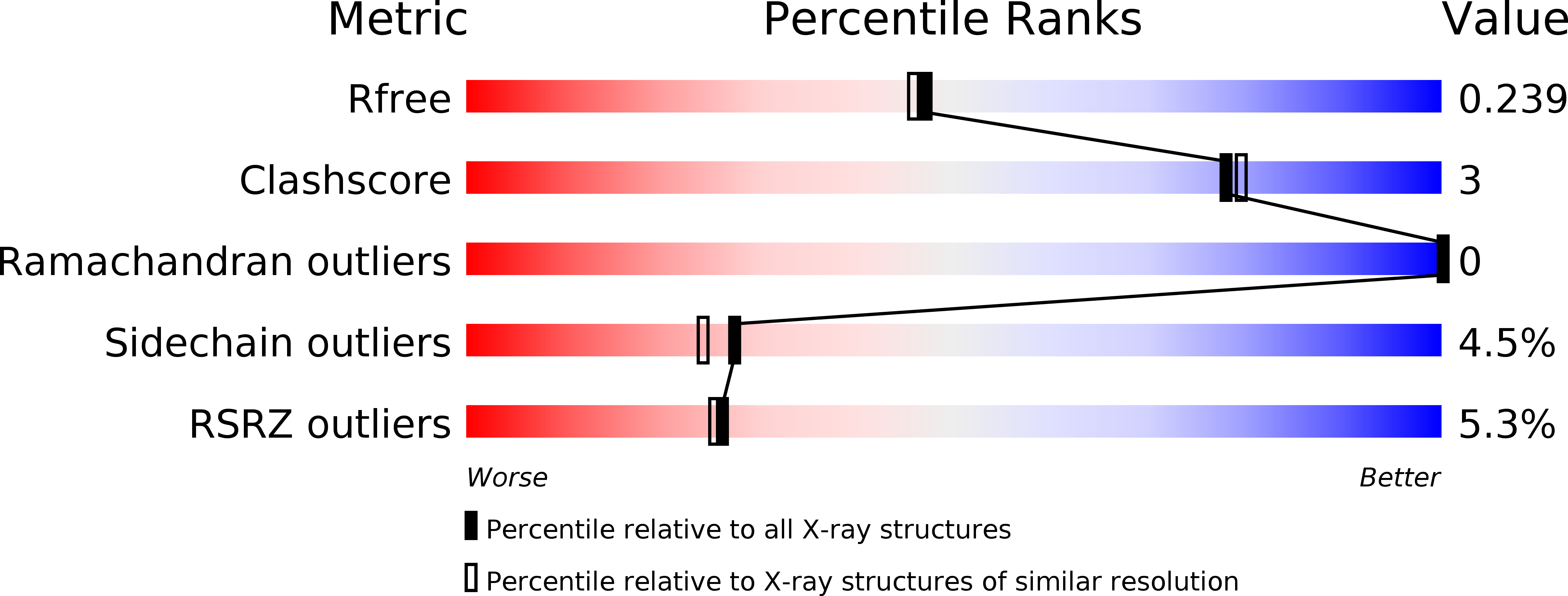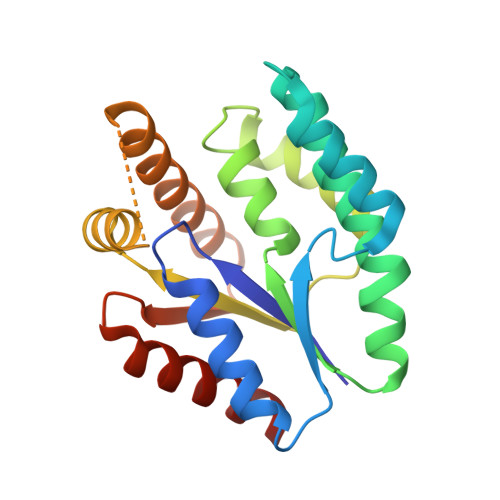Sulfonylpiperidines as novel, antibacterial inhibitors of Gram-positive thymidylate kinase (TMK).
Martinez-Botella, G., Loch, J.T., Green, O.M., Kawatkar, S.P., Olivier, N.B., Boriack-Sjodin, P.A., Keating, T.A.(2013) Bioorg Med Chem Lett 23: 169-173
- PubMed: 23206863
- DOI: https://doi.org/10.1016/j.bmcl.2012.10.128
- Primary Citation of Related Structures:
4HLC, 4HLD - PubMed Abstract:
Thymidylate kinase (TMK) is an essential enzyme for DNA synthesis in bacteria, phosphorylating deoxythymidine monophosphate (dTMP) to deoxythymidine diphosphate (dTDP), and thus is a potential new antibacterial drug target. Previously, we have described the first potent and selective inhibitors of Gram-positive TMK, leading to in vivo validation of the target. Here, a structure-guided design approach based on the initial series led to the discovery of novel sulfonylpiperidine inhibitors of TMK. Formation of hydrogen bonds with Arg48 in Staphylococcus aureus TMK was key to obtaining excellent enzyme affinity, as verified by protein crystallography. Replacement of a methylene linker in the series by a sulfonamide was accomplished with retention of binding conformation. Further optimization of logD yielded phenol derivative 11, a potent inhibitor of TMK showing excellent MICs against a broad spectrum of Gram-positive bacteria and >10(5) selectivity versus the human TMK homologue.
Organizational Affiliation:
AstraZeneca Infection Innovative Medicines, 35 Gatehouse Drive, Waltham, MA 02451, USA. gabriel@sagerx.com















